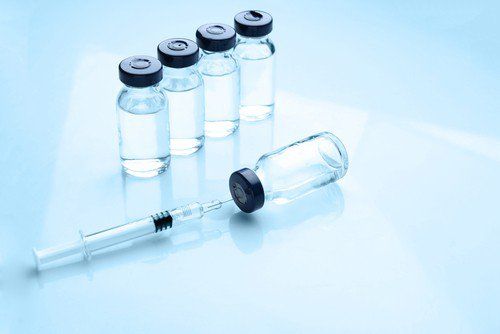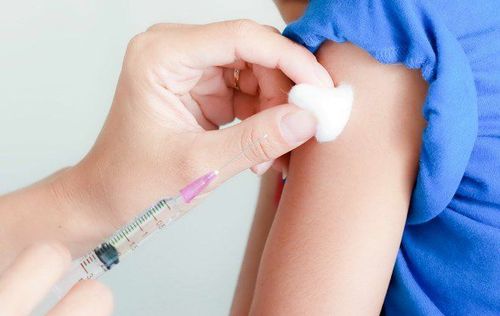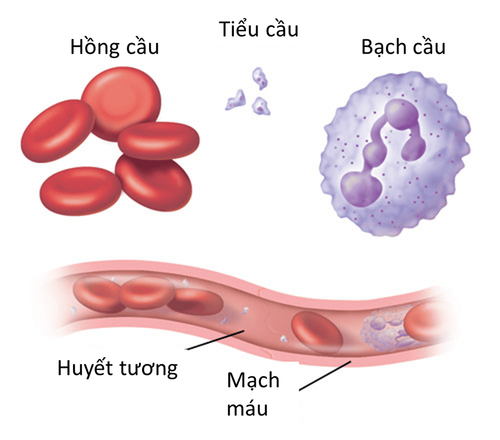This is an automatically translated article.
The article is professionally consulted by doctors of Laboratory Department, Vinmec International Hospital Da Nang.
Immune serum is a substance with a similar function to vaccines, used for the purpose of enhancing immunity to fight dangerous diseases, especially infectious diseases. In particular, immune serum can save many patients' lives in critical cases.
1. What is Immune Serum?
Immune serum or antiserum, also known as immunoglobulin or immunoglobulin, is a quantity of antibodies of human or animal origin, which helps the body to have antibodies for prevention, treatment of diseases, and combination therapy. and alternative treatment to combat dangerous diseases, especially infectious diseases.
Immune serums are classified by the way they are made and by the way they work. Specifically:
Classified according to the method of manufacture, including: Non-specific immune serum, specific immune serum and purified immune serum. Classified by mode of action include: Antibacterial sera, antiviral sera, antitoxin sera and polyvalent sera, monovalent sera.
2. Immune Serum Formation
Immune serum can save many lives in critical cases. This is a great advantage, far superior to other vaccines. Because if vaccinated, it takes a long time to protect the body against pathogens.
Scientific researchers have prepared immune serum by combining with specific antigens or foreign proteins and other microbial components, be it viruses or beneficial bacteria. When these ingredients are combined, it will be possible to destroy pathogenic viruses, thereby eliminating pathogens.
Immune sera production can be carried out by injecting harmless viruses or bacteria into animals, and then taking their blood as a sample.
3. Principle of using immune serum

Sử dụng globulin miễn dịch cần phải đảm bảo nguyên tắc vô cùng chặt chẽ
3.1 General principles The general rule when using immune serum is:
Must use the right people who need the immune serum Right time, right route and right dose. Know how to prevent and manage unwanted reactions brought about by immune sera. Know how to use it with VX. Store immune serum according to regulations. 3.2 How to introduce immune serum into the body Immune serum is injected into the body by intramuscular injection. Immune serum administration by intravenous route: The intravenous route is prone to undesirable reactions, so it is not recommended than the intramuscular route. Note: Serums of animal origin should not be administered intravenously. Dosage: Will depend on the age and weight of the patient, on average from 0.1 -1 ml/kg body weight depending on serum type and purpose of use. Some sera are calculated in units such as tetanus antitoxin, diphtheria, averaging 250 units for 1 time. The therapeutic dose will be higher than the prophylactic dose.
Time of use: Put the immune serum into the body as soon as possible.
Target users: 3 groups of subjects are commonly used:
Prevention and treatment of infections: Serum antitetanus (SAT); anti-diphtheria serum (SAD) and anti-rabies serum (SAR),... Immunoregulatory: Indicated for subjects with chronic lymphocytic leukemia; IgG subclass deficiency disease; autoimmune neutropenia; autoimmune hemolytic anemia; arthritis; neonatal infections; lupus erythematosus. Replacement therapy: Replace primary immunodeficiency such as primary hypogammaglobulinemia, antibody specificity deficiency, antibody affinity deficiency, and replace secondary immunodeficiency as in disease Chronic lymphocytic BC, marrow transplantation, multiple trauma, acquired MD deficiency syndrome. Do not use globulin in cases of secondary protein loss such as: Nephrotic syndrome, chronic intestinal disease and severe burns.
4. Immune Serum Response

Tiêm huyết thanh miễn dịch
When injecting immune serum, there are usually the following reactions:
Local reaction: With the manifestation of the injection site, there may be pain and redness, but it will disappear after a few days and is not dangerous.
Systemic reactions: The patient will have chills, shortness of breath, joint pain, possibly headache and vomiting. The most severe is serological shock, which can appear 10 to 14 days after the first injection, because at that time the body has already produced antibodies against either immediately after the injection or a few days after the second injection of serum. 2. Common symptoms are difficulty breathing, itching and hives all over the body, abdominal pain, urinary retention...
Therefore, in order to prevent serological reactions, before using it, it should be noted:
Ask the patient Have you ever used serum? If the patient has used it once, caution should be taken when using it from the second time onwards, because the reaction rate is higher than the first time. Perform a desensitization reaction by diluting the serum 10 times with sterile physiological saline. Inject 0.1ml into the skin, 20 minutes later there is no redness, then the serum can be injected. If there is redness at the injection site after 15-20 minutes, the injection should not be given because there has been a reaction. In case the patient's condition has to be used, the total dose should be divided into smaller doses to be injected gradually, 20-30 minutes apart. In the process of serum transfusion, it is necessary to constantly monitor, carefully and fully prepare conditions for timely handling if any reactions occur. For patients, it is necessary to choose reputable medical facilities for implementation. Avoid going to unreputable places because the quality of serum is difficult to control and the serum is easy to infect. If put into the body, it will cause the body to suffer dangerous diseases such as sepsis,...
Please dial HOTLINE for more information or register for an appointment HERE. Download MyVinmec app to make appointments faster and to manage your bookings easily.













